Last Chance to Catch NYC's Holiday Notalgia Train
We met the voices of the NYC subway on our nostalgia ride this weekend!


The restaurants that our grandparents told us about are getting replaced weekly. The last automats in New York have long since closed down. And naturally, many New Yorkers are worrying for their city. Our suggestion? Go dine at some of the most iconic New York restaurants before they’re replaced. Or go with faith that they won’t be replaced; after all, they’ve withstood the test of time so far. With the help of Mitch Broder’s book, Discovering Vintage New York, we’ve compiled some of our favorite iconic, vintage discoveries.
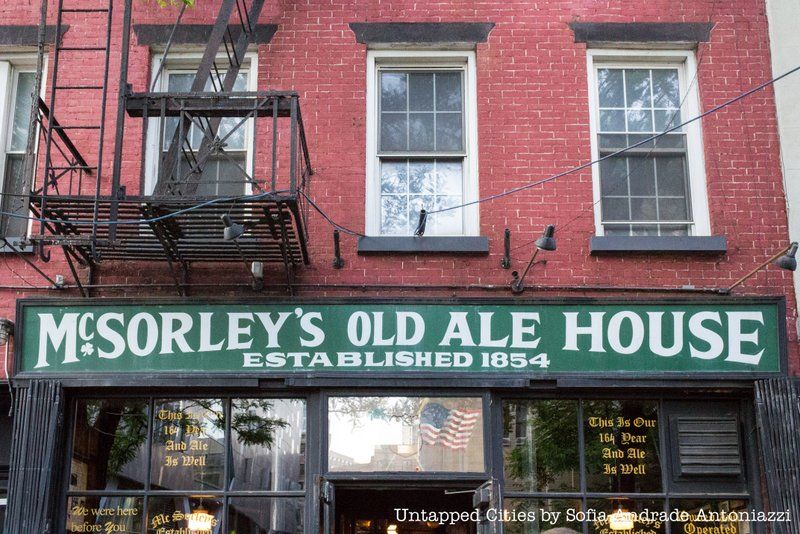
Standing inconspicuously at 15 E. 7th Street, McSorley’s Old Ale House offers two drinks: McSorley’s Dark Ale and McSorley’s Light Ale. Despite their lack of variety, or perhaps because of it, the bar has thrived throughout the years, managing to keep fairly low prices.
Collectibles line the walls, some of them there since 1910. Wishbones hang from above placed there by neighborhood boys who went to war and did not make it back. Though the ale house is declared to go back to the year 1854, records deem it impossible. Whatever the year the establishment came to be, they have some of the oldest urinals, dating back to 1911.
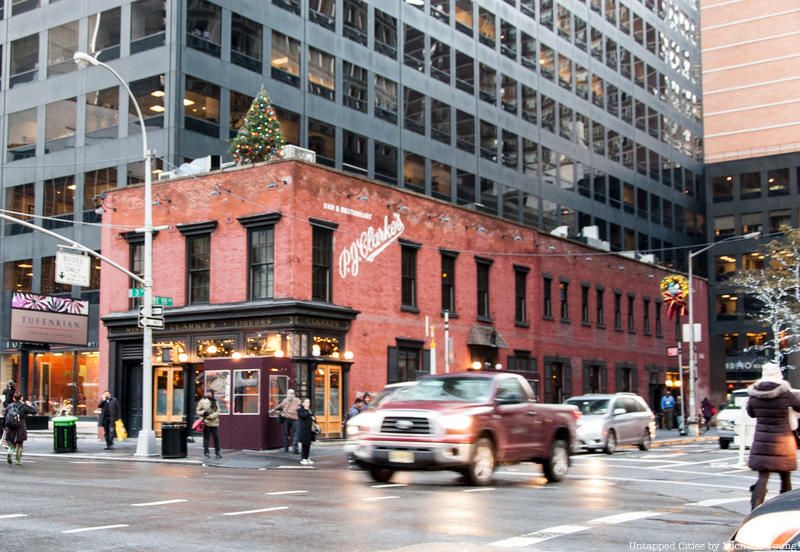
It’s the bar that has shaped what people think of bars. Buddy Holly proposed here, Frank Sinatra had Table 20 on reserve, and Johnny Mercer, JFK, Jackie O, Ted Kennedy, and Dick Clark all became a part of the iconic New York restaurant’s history. Nat King Cole once called their bacon cheeseburger “the Cadillac of burgers.” Order the Cadillac.
Though P.J. Clarke’s now has a handful of locations in New York City, Philadelphia, and Washington D.C., the original location on 3rd Avenue is still the best one. It’s full of mementos like a broken pay phone, human leg bones (an Irish good luck talisman), and Skippy the taxidermied dog and has been featured on film and TV shows like Mad Men.
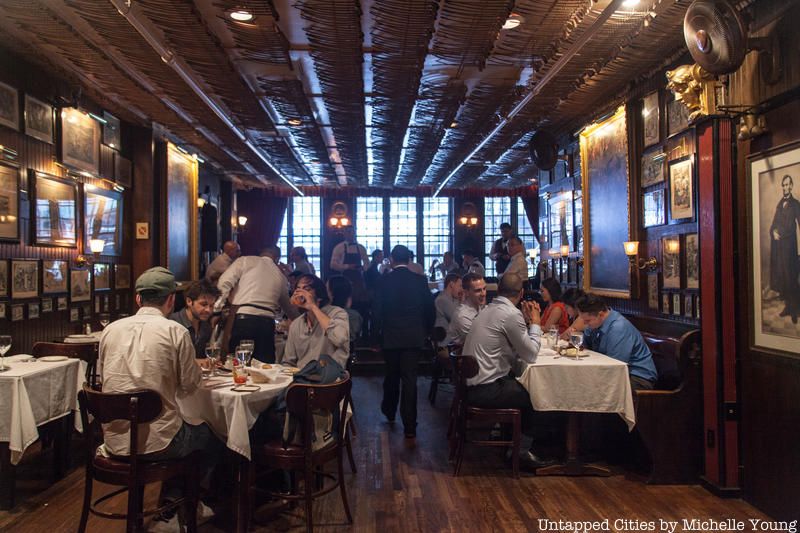
The walls of Keen’s Steakhouse are covered in old playbills and theater memorabilia. That’s because when this high end steakhouse and oyster establishment opened in 1885 under the managerial leadership of its namesake, Albert Keen, it was mainly used by actors and performers from next door Garrick Theatre as a place to freshen up between acts. The actors starring in Abraham Lincoln’s last show were once among them, hence a wall of Lincoln memorabilia that includes the final show’s playbill on one wall of this iconic New York restaurant.
Nowadays, Keen’s provides a gilded, old-world dining experience. Their mutton chops are especially renowned, and were praised by James Beard as putting “everyday chops momentarily in the pale.” Come for the flavor, stay to pick out the well known names on the pipes that line the wall.
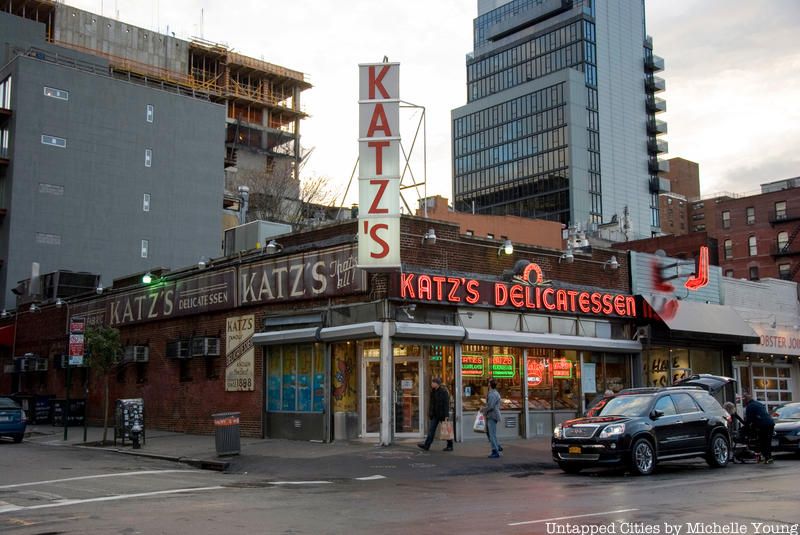
This iconic New York City deli was founded in 1888. It has weathered the development around its corner location on Houston Street and Ludlow Street and has even expanded next door to create a “deli-inspired” gallery, called The Space. Famous for its pastrami and hot dogs, Katz’s also has an interior is also worth a look for a New York City frozen in time.
In its early days, Katz’s was a place where Jews who lived on the Lower East Side congregated, but now it’s a veritable destination for tourists and New Yorkers who come from all over the five boroughs, not to mention the tri-state area.
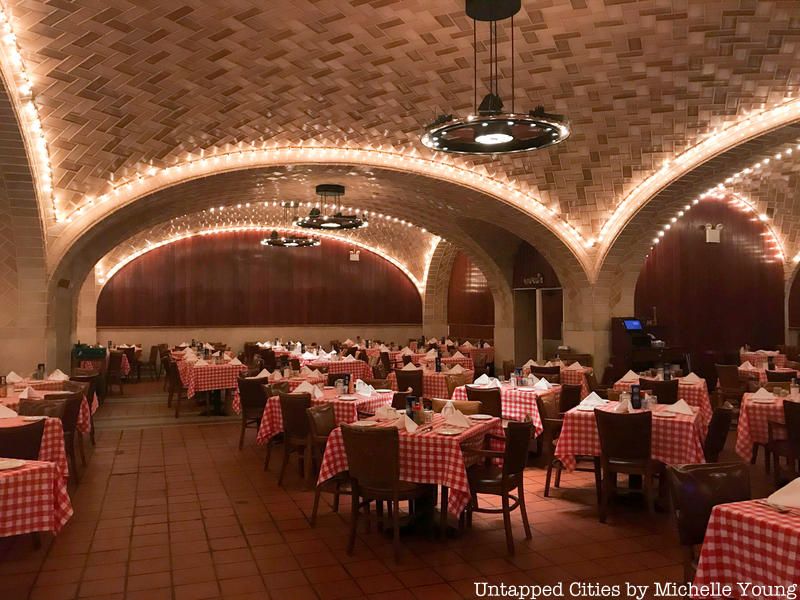
When Grand Central Terminal‘s anchor restaurant was first established, it was a little behind on New York’s oyster craze. It caught up. It’s perfected the oyster, and now serves up to 30 different varieties of oysters and 25 types of fish. If you don’t like fish (you’re down to a selection of 5 dishes), come for the Martinis and the magnificent Guastavino tiled ceiling.
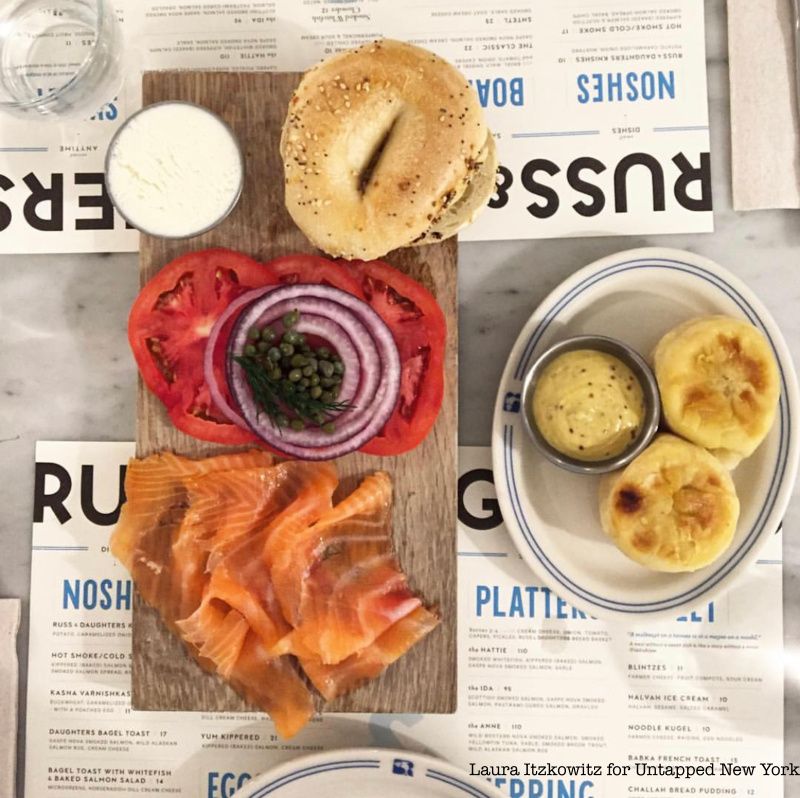
Though Russ & Daughters started as an appetizing shop in 1914, it’s since expanded to open three sit-down cafes, one around the corner from the shop on Houston Street, one at the Brooklyn Navy Yard, and another inside the Jewish Museum on the Upper East Side (currently closed). It all started with Joel Russ, who immigrated from Poland in 1907 and started selling herring out of a barrel to his fellow Jews on the Lower East Side. He finally saved up enough money to open a brick-and-mortar store in 1914. Having no sons, he enlisted his three daughters to help him at the shop and in 1935 made them full partners and changed the shop’s name to Russ & Daughters.
Now run by the fourth generation of the Russ family, the original shop still looks much the same as it did in 1914 and sells delicacies like smoked salmon, caviar, bagels, bialys, challah, babka, rugelah, matzoh ball soup, and of course herring. The cafes offer many of the same foods, just with the option to sit down and eat.
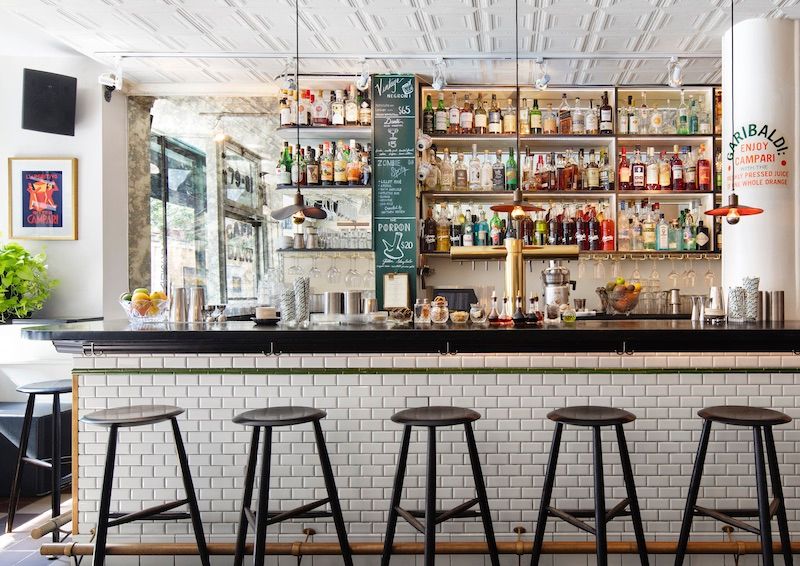
Reborn in 2019, Dante (originally known as Caffè Dante) is a Greenwich Village stalwart. When it originally opened on MacDougal Street in 1915, the area was an extension of Little Italy and Caffè Dante was frequented by Italian immigrants who came to sip espresso and reminisce about home. Over the course of the following decades, it became a haunt for the Beat generation, musicians like Bob Dylan, and actors like Al Pacino and Jerry Seinfeld.
When Australian couple Linden Pride and Nathalie Hudson took it over in 2015, they spruced up the decor but kept the original owner’s photos. They also seriously upped the cafe’s cocktail game, earning it the number one spot on the World’s 50 Best Bars list in 2019. Come for the vibes, stay for the Garibaldi.
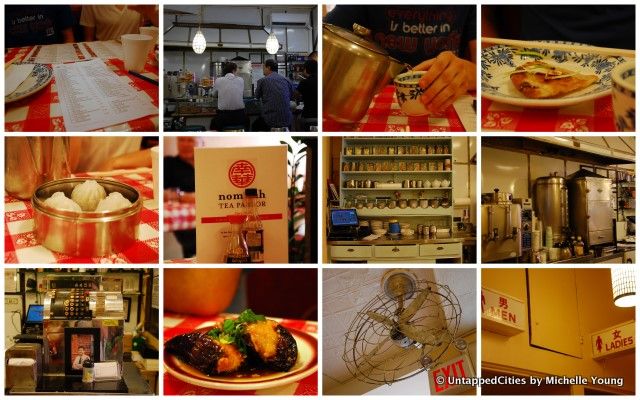
Established on Doyers Street on Chinatown’s Bloody Angle, Nom Wah originally opened as a tea parlor and bakery specializing in moon cakes. Wally Tang purchased it in 1974 and began serving dim sum in the ’80s. After a period of decline, it was taken over by Wally’s nephew Wilson Tang, who spruced it up while keeping the old-timey atmosphere and got rid of the old dim sum carts in favor of a made-to-order menu.
These days, Nom Wah is a go-to spot for dim sum and claims the title of New York City’s first dim sum establishment. It’s also the oldest continually running restaurant in Chinatown.
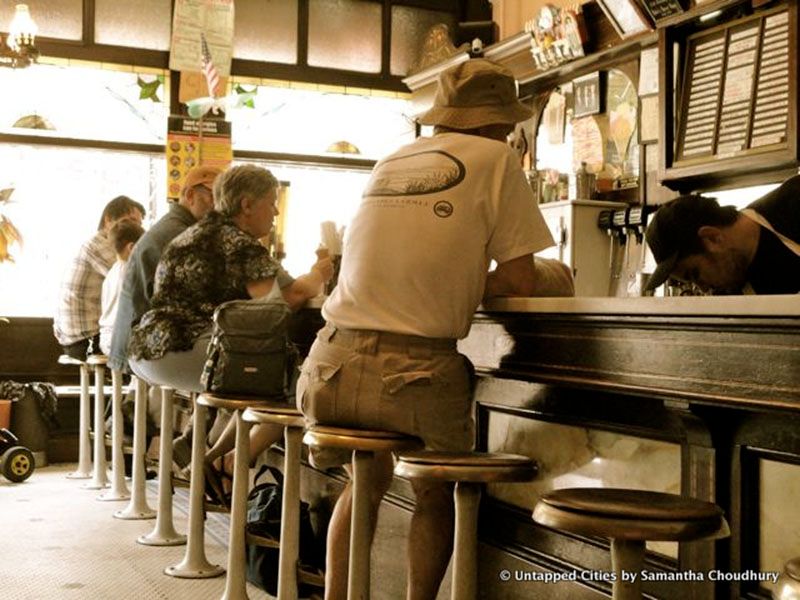
This Forest Hills ice cream parlor and candy shop is quintessentially retro, complete with turn-of-the-cenutry counters, antiques, and the types of candy that you thought didn’t exist anymore. Everything is made in-house, including the to-die-for sundaes.
Eddie’s Sweet Shop holds the unofficial title of New York City’s oldest ice cream parlor. It was established in 1925 and was bought by Giuseppe Citrano in 1968. His son Vito now runs the shop and still uses some of the original owner’s recipes, hand-whipping 18 flavors of ice cream in addition to making syrups used in milk shakes, ice cream sodas, and egg creams.
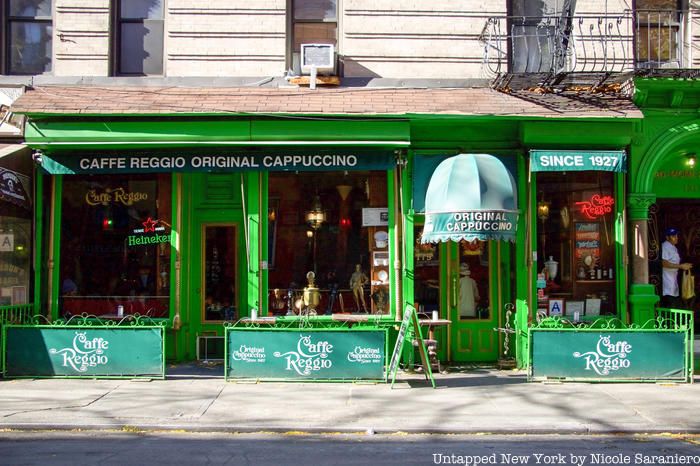
If the assortment of dark Renaissance-era oil paintings, statues, and stained-glass windows aren’t enough of an indication that this tiny coffee shop is a classic, just ask consult local historians. Their claim: the espresso machine that still stands tall in Reggio, imported from Italy in 1902, was the first in America and was the first cafe in the U.S. to serve cappuccino.
At the time, the store was a barbershop that served clients 10-cent cups of coffee. The original owner, Domenico Parisi, an Italian immigrant, saved up for 40 years in order to buy the $1,000 espresso machine and ship it over from Italy. Niso and Hilda Cavallacci bought Caffè Reggio in 1970 and today it’s run by their son.
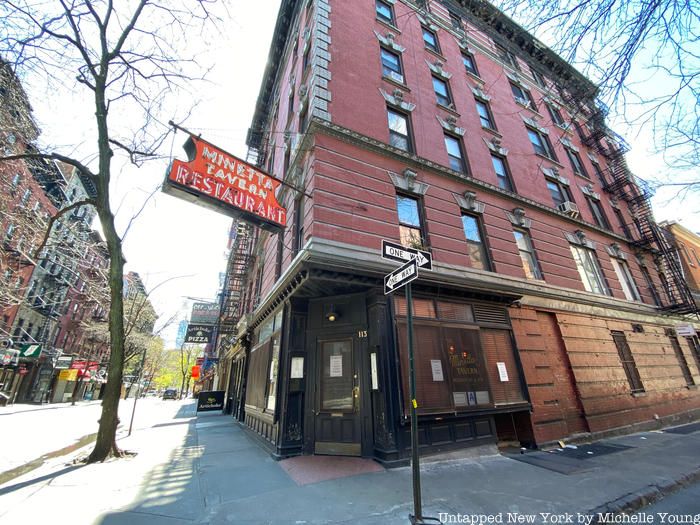
Since Keith McNally revived this iconic New York restaurant in 2009, it’s been selling burgers that cost $29, and that are worth every penny, according to food critics. But before that, it was an Italian restaurant that was a favorite of Beat poets and other unshaven pub crawlers in the Village. Most remnants of this time remain, and what’s been added only lends the tavern all the class and ambiance you’d want to accompany your $29 burger.
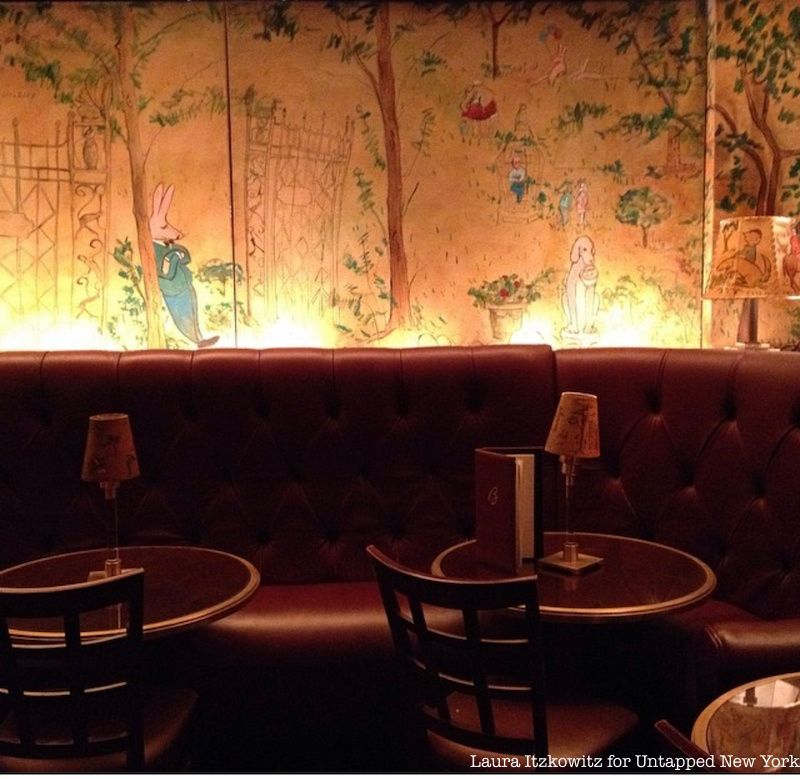
In exchange for one and a half years of room and board for himself and his family, Ludwig Bemelmans painted the walls at the Carlyle Hotel Bar in 1947. As a result, the bar was renamed Bemelmans Bar. The murals depict Central Park throughout the seasons with a cameo by the character from Bemelmans’ popular children’s books, Madeline.
Bemelman’s Bar is located at 35 East 76th Street in the Carlyle, a Rosewood Hotel.. Every evening, a pianist plays live music, enhancing the bar’s old New York vibe. Bemelmans also serves one of the best Martinis in the city. Whether you are going to Bemelman’s Bar to see jazz or to have a cocktail, you will be rewarded with Ludwig Bemelman’s only public work of art.
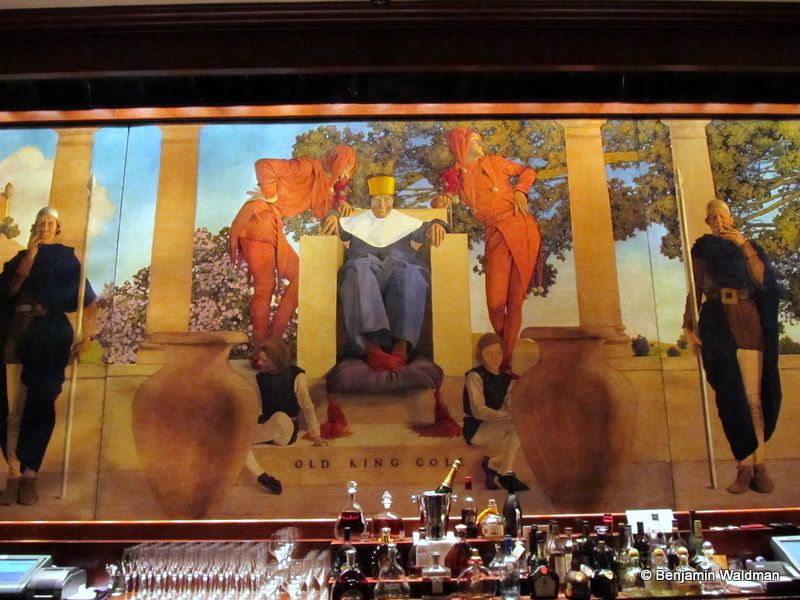
The King Cole Bar, located in the elegant St. Regis Hotel, is famous for its namesake mural and for being the birthplace of the Bloody Mary cocktail. The mural, painted by illustrator Maxfield Parrish, was originally commissioned by John Jacob Astor IV in 1909 for his Knickerbocker Hotel. Parrish was reluctant to paint the mural due to his Quaker upbringing but ultimately agreed for the sum of $5,000. Old King Cole is thought to have been modeled on Astor, but there does not appear to be any resemblance between the two.
In 1921, Vincent Astor, John Jacob Astor IV’s son, converted the Knickerbocker Hotel to office space. In 1935, Astor transferred the mural to St. Regis Hotel, which he also owned. The mural was placed in the hotel’s bar, which was renamed after it. The mural was cleaned and restored in 2007 at a cost of over $100,000, during which time a replica of the mural hung in its place. Today, Old King Cole continues to watch over the bar and its patrons.
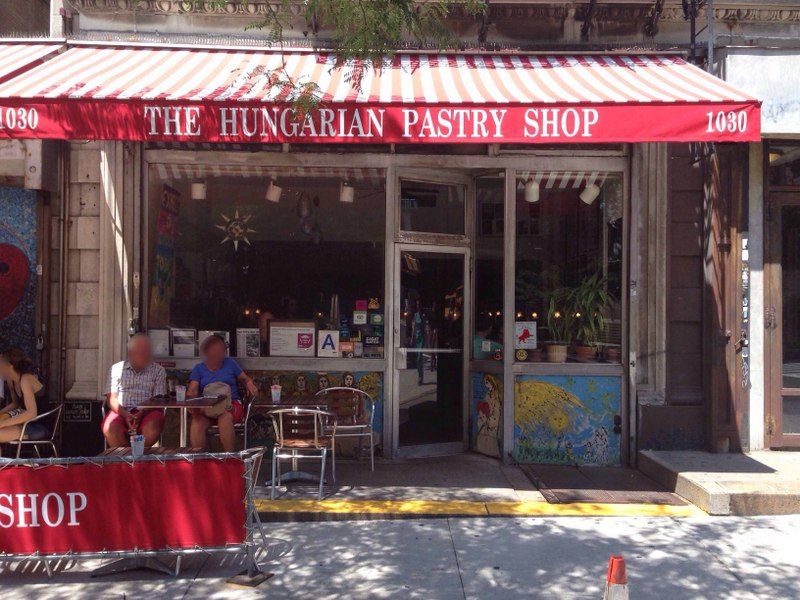
The bathrooms at The Hungarian Pastry Shop were once adorned with the intellectual graffiti of Columbia students long since graduated (don’t worry, the wall has been restarted). A hand-painted sign from the original owner advertises pastries that are no longer sold, and there’s no WiFi. Those shouldn’t be distractions when there are so many spectacular pastries still being baked here, and so many weird and fascinating people to talk to while you enjoy them.
In fact, many writers and students come precisely because the no-frills decor and lack of WiFi lets them concentrate on their work. And work they do—the café displays the book jackets of its well established patrons to prove it. It was also where a scene in Woody Allen’s Husbands and Wives was filmed.
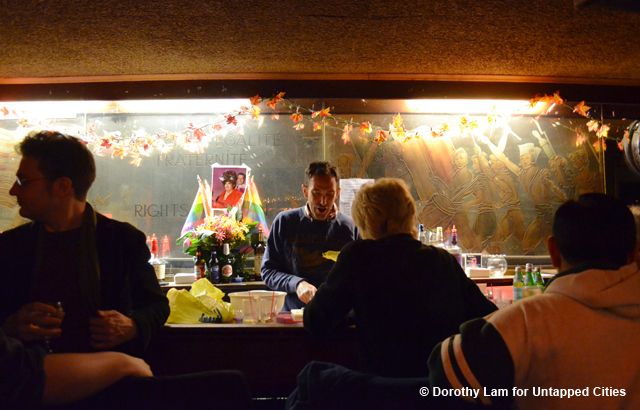
The site of Thomas Paine’s 1809 death is now being filled with showtunes. Every night, Marie’s Crisis Cafe is filled with jovial Broadway enthusiasts who sing into the night for ten hours. The pianist claims to have memorized fifteen thousand songs. It’s also home to a WPA mural that depicts the French and American revolutions.
It has existed in its current iteration since 1972, and before that was a speakeasy/restaurant originally opened in 1929 by Marie DuMont, a French national for whom the bar was named. She sold the building to the Grant family, who have operated it since 1972 and has been welcoming members of the LGBTQIA+ community long before the rest of society caught up.
Additional reporting by Laura Itzkowitz, Benjamin Waldman, Cybele Mayes-Osterman, and Michelle Young.
Next, read about 15 of the oldest restaurants in NYC!
Subscribe to our newsletter